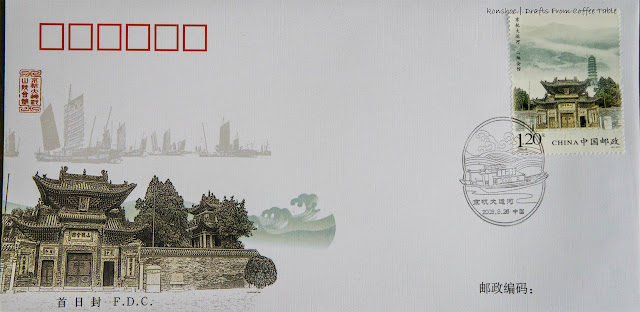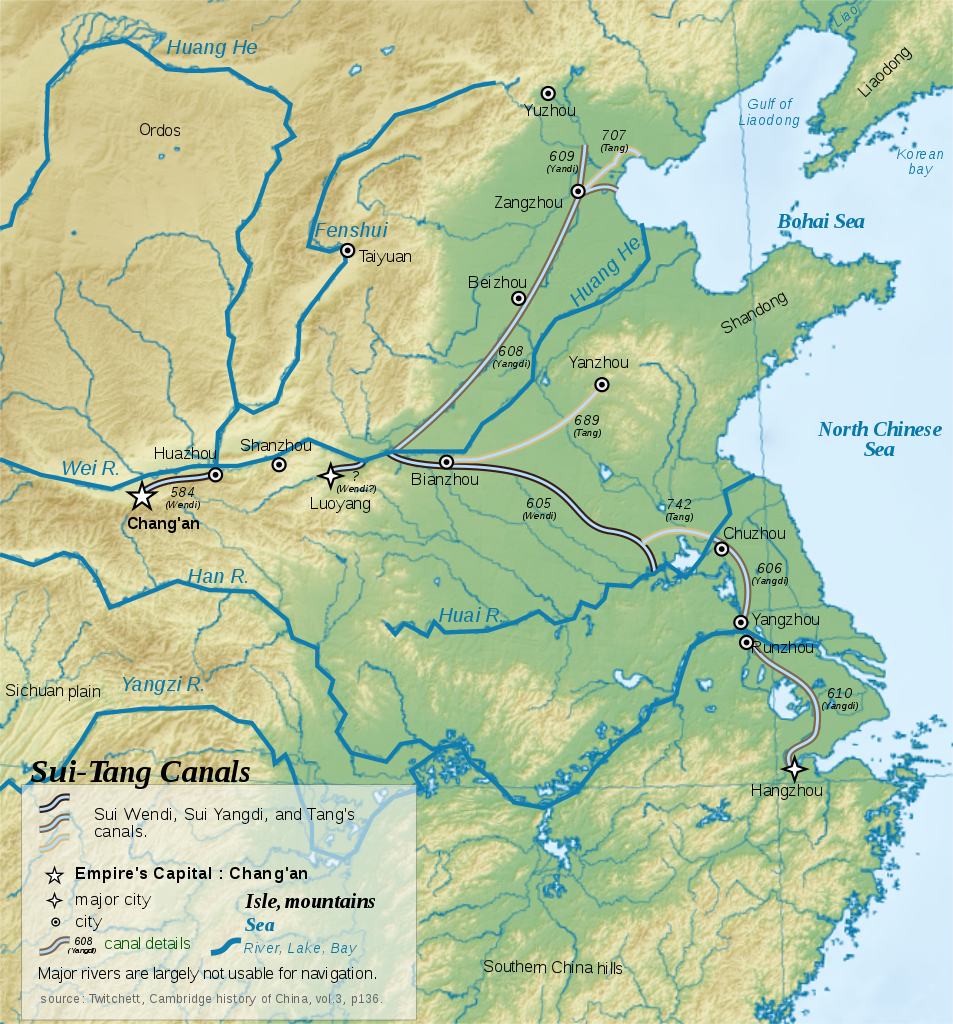Seems like I am on a grand tour of China with my collection of China themed First Day Covers. I just bought myself a set of 6 FDCs on one of China's ancient architectural marvel that is inscribed in UNESCO's World Heritage List - the Grand Canal. Although I have heard of the name, I am quite unfamiliar with its history and significance so I decided to explore further online.
Like the Great Wall of China, the Grand Canal was a feat of civil engineering marvel - longest wall in the case of Great Wall, longest artificial river in the Grand Canal's case. Both were built and connected in different eras, lasted throughout the ages into the modern world, and were first breathed life in the riotous Spring and Autumn Period (春秋时期).
Like the Great Wall of China, the Grand Canal was a feat of civil engineering marvel - longest wall in the case of Great Wall, longest artificial river in the Grand Canal's case. Both were built and connected in different eras, lasted throughout the ages into the modern world, and were first breathed life in the riotous Spring and Autumn Period (春秋时期).
 |
| Lantern Lighting Pagoda 雷峰塔 |
 |
| Palace of the Goddess of the Sea 天后宫 |
 |
| Shanxi Shaanxi Guild Hall 山陕会馆 |
 |
| Qingjiang Water Gate 清江闸 |
 |
| Wenfeng Pagoda 文峰塔 |
 |
| Gongchen Bridge 拱宸桥 |
The canal stretches for 1776 km from north to south, starting at Beijing and ending at Hangzhou (杭州), snaking through Tianjin (天津), the provinces of Hebei (河北), Shandong (山东), Jiangsu (江苏) and Zhejiang (浙江) in its path. In the process of connecting north to south, the canal also links another two mighty rivers of China - Yangtze and Yellow River.
 |
| A map showing how the Grand Canal connects Beijing and Hangzhou, as well as the cities and rivers it crosses to do so (image taken from Wikipedia). |
Its highest elevation is at the mountains of Shandong, where it reaches up to 42m. Ships had no trouble crossing this elevation though after the pound lock, invented by engineer Qiao Weiyo in 10 BC during the Song Dynasty, was put in place.
In the beginning the Grand Canal started out as the brainchild of the Kingdom of Wu during the Spring and Autumn Period, constructed for trading and army supplying purposes. By connecting existing waterways and rivers, the project was completed within 3 years and the cities of Yangzhou and Huai'an were the end points.
Subsequent sections of the canal were constructed during Sui Dynasty and Tang Dynasty but they remained separated and disconnected. Sadly the same economic lifestream could be turned into a weapon of war, and the dykes in certain sections close to the yellow River were broken off to ward off the invading army by flooding them. This ruined much of the canals to the south of the Yellow River and the necessary repairs only happened during the Yuan Dynasty, after the Mongol invasion.
With the capital shifted to Beijing in Yuan Dynasty, the modern canal took shape, with Beijing and Hangzhou connected directly for the first time. The canal once again fell into disuse with the decline of the Yuan Dynasty, but saw renovation and maintenance from Ming Dynasty onwards. Finally its historical importance was acknowledged through an inscription into the World Heritage List in 2014.
 |
| Various sections of the Grand Canal during the Sui and Tang Dynasty (image taken from Wikipedia). |
The canal served not only as the economic life stream of China throughout the various dynasties, but also as a symbol of unity. Throughout the ages it had a make or break effect on the economies of various cities and tribes connected by the canal. Certain canal sections were closed off and others were opened throughout its life, the Chinese dynasties forming it into shape as they saw fit to the economic necessities.
Life on the canals were most aptly narrated by Ian Johnson in a National Geographic article. Barges powered through the lifeline of the country by the canal people, known as chuanmin (船民), who lived their life on the waters, not unlike villagers on barges.
The released set of stamps by China Philatelic Corporation is not just limited to these 6 stamps, but also included a minisheet with a face value of RMB6. Unfortunately I did not manage to get my hands on that first day cover. Oh well, maybe another time.
Life on the canals were most aptly narrated by Ian Johnson in a National Geographic article. Barges powered through the lifeline of the country by the canal people, known as chuanmin (船民), who lived their life on the waters, not unlike villagers on barges.
The released set of stamps by China Philatelic Corporation is not just limited to these 6 stamps, but also included a minisheet with a face value of RMB6. Unfortunately I did not manage to get my hands on that first day cover. Oh well, maybe another time.
Date of Issue: 22 August 2013
Denominations: RMB1.20
Designer: Yan BingWu (阎炳武)
Sources:
No comments:
Post a Comment